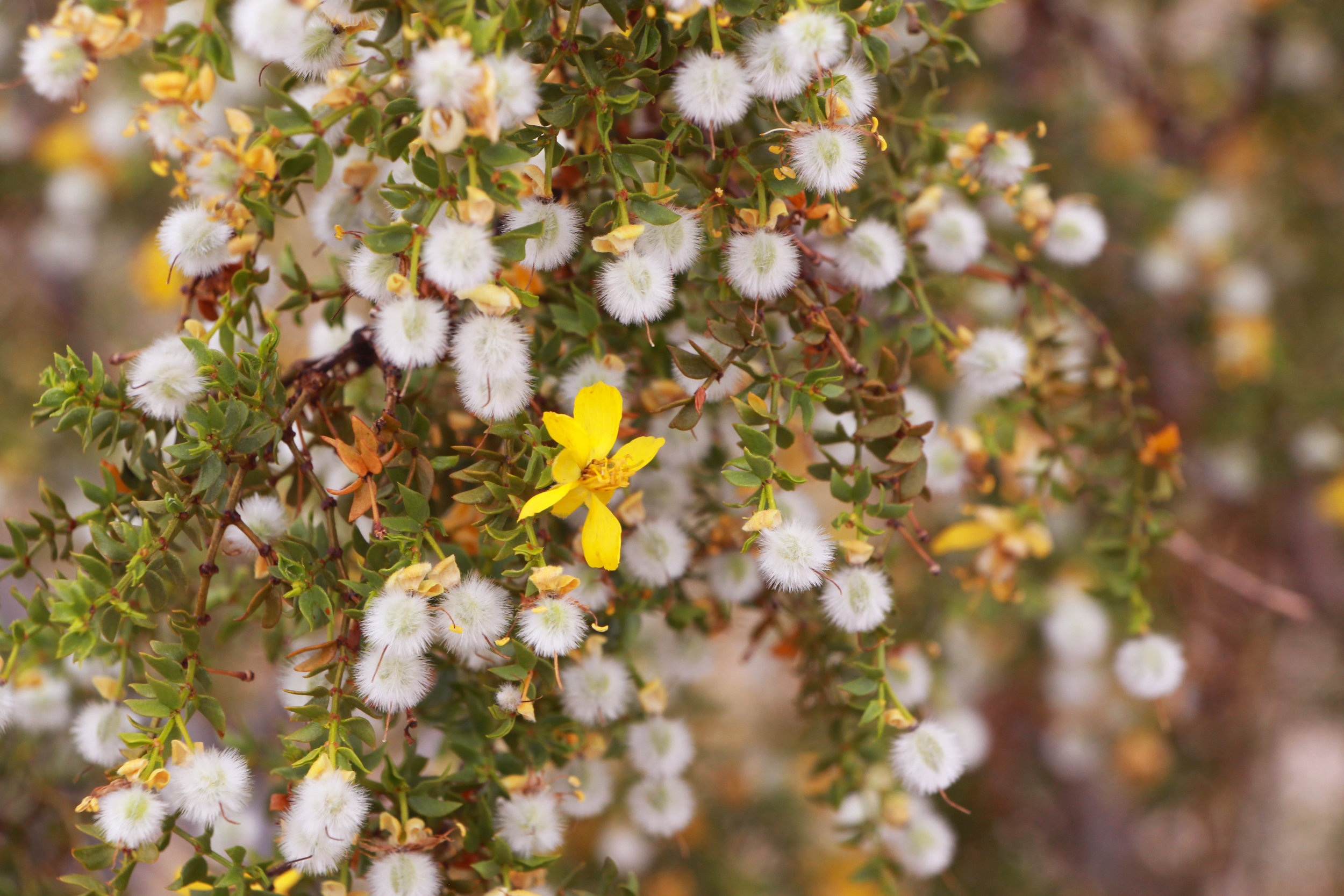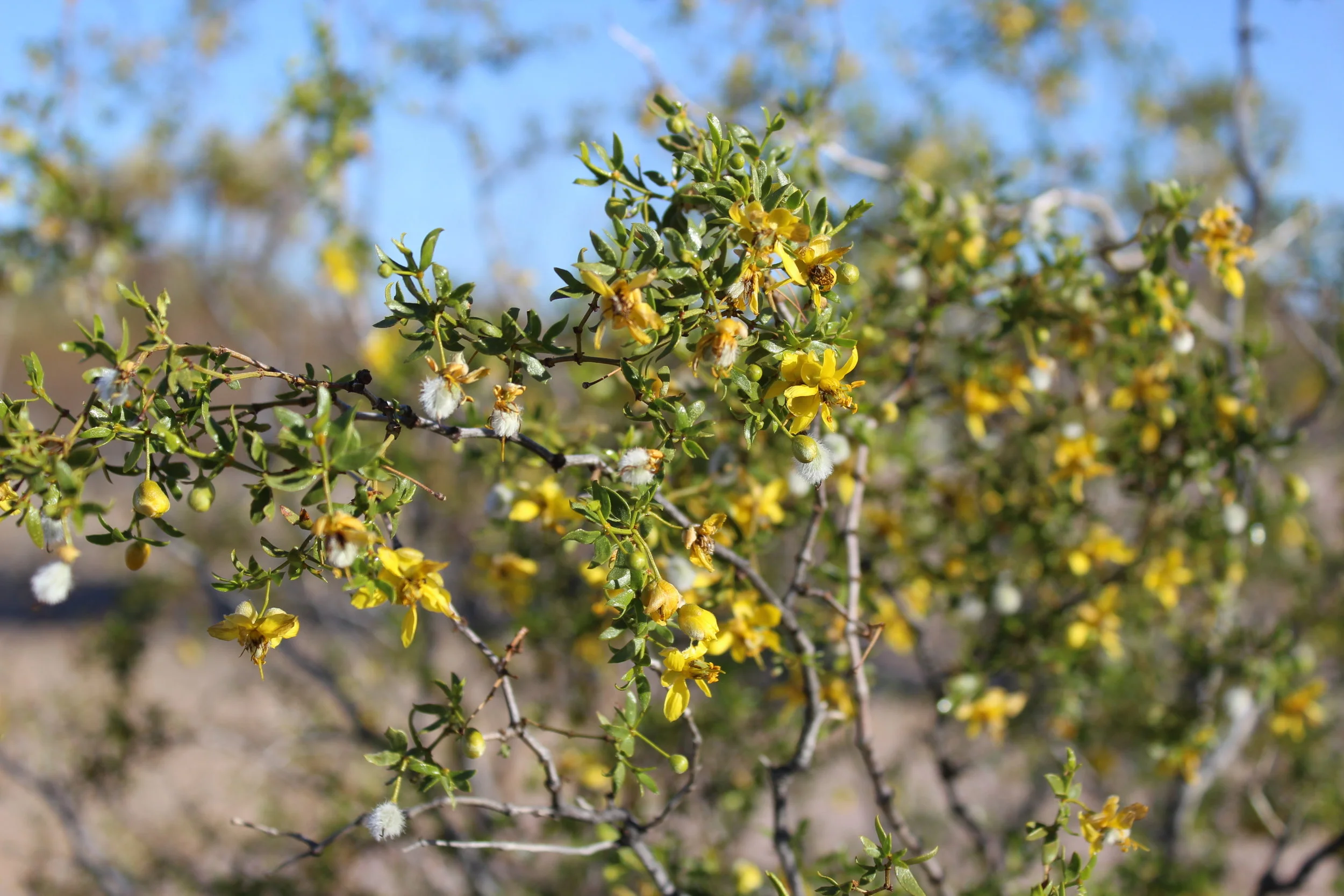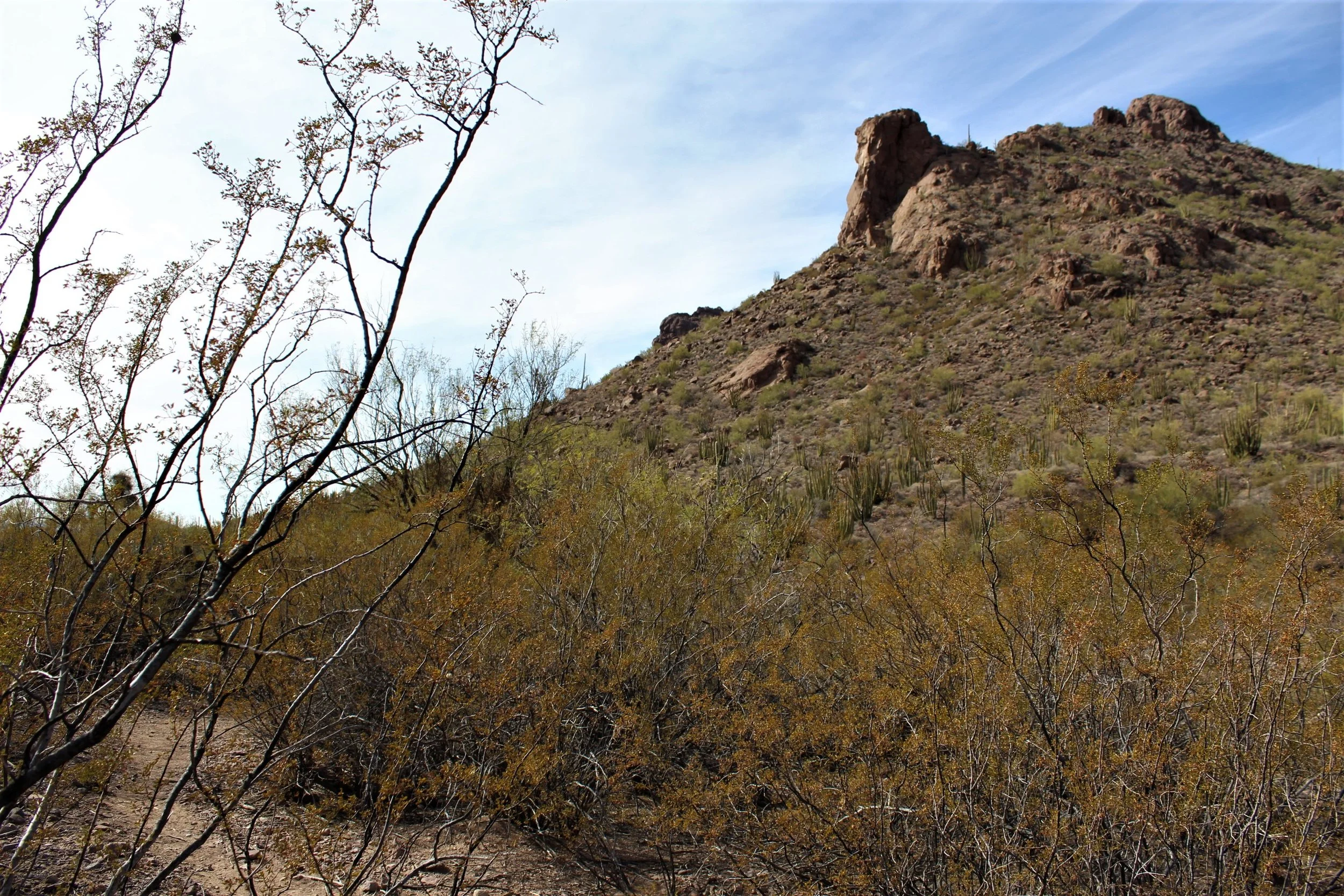Syntrichia caninervis growing in both soil surface and milky quartz. [SOURCE]
To be accused of living under a rock is generally not a good thing in today’s society. That is, unless you are a moss living in the Mojave Desert. By setting up residency under milky quartz, a few Mojave mosses are able to find much more favorable growing conditions than they would in the surrounding desert environment.
Microclimates are extremely important, especially in harsh environments like the Mojave. By providing conditions that are ever so slightly better than ambient conditions, microclimates can increase the amount of habitat available, which can lead to greater biodiversity overall. That is exactly what is going on beneath milky quartz in high elevation habitats of the Mojave Desert.
Tortula inermis (white arrow) and S. caninervis (black arrow) growing in a milky quartz. [SOURCE]
While dabbling in a bit of mineral appreciation, bryologists from the University and Jepson Herbaria at UC Berkeley discovered bright green moss growing under some chunks of quartz. Whereas moss growing on the surface of soil and rocks throughout the region were dark, dry, and dormant, the moss growing under quartz was green, lush, and growing. This observation launched a series of experiments to better understand how milky quartz may be providing more favorable microclimates for some desert mosses.
By measuring the conditions under chunks of milky quartz and comparing it to that of the surrounding landscape, researchers found that these minerals do indeed provide mosses with much more favorable conditions. Moreover, the benefits to living under milky quartz are numerous, offering many advantages to resident mosses.
For starters, milky quartz serves as a buffer against large swings in temperature. Deserts are known for being extremely hot but they can also be extremely cold. Sandy soils may heat up very quickly when the sun is out but, by the same logic, they also cool extremely quickly as soon as the sun sets. Rapid swings in temperature can be very harmful to plants so anything that can buffer such swings is generally a good thing. That is exactly what milky quartz does. As the sun rises in the sky, it takes milky quartz longer to heat up than the surrounding landscape, which means the environment directly underneath stays cooler for longer. Similarly, once warmed by the sun, milky quartz takes longer to cool down as the sun sets. As such, the environment directly underneath doesn’t cool down as quickly. By monitoring temperatures over the course of a year, it was found that temperature swings under the quartz were buffered by an average of 4°C (7°F) compared to that of the surrounding environment.
Tortula inermis was more likely to be found growing under quartz at high elevations. [SOURCE]
Another benefit to living under quartz involves humidity. Not only are deserts hot, they can also be very dry. The Mojave is certainly no exception to this rule as it is considered the driest desert in North America. A lack of water can be troublesome for mosses. Because they lack roots and a vascular system, mosses rely on osmosis for obtaining the water they need to grow and reproduce. They also lose water and dehydrate quickly. For individuals growing exposed to the elements, this means drying up and going dormant. Mosses simply can’t grow when water isn’t around. By monitoring the relative humidity under milky quarts, researchers found that the undersides of milky quartz were twice as humid as the surrounding landscape.
Thanks to this increased humidity, mosses living under milky quartz are able to hold onto water for much longer than mosses growing on exposed soil. This has both short and long-term consequences for moss growing seasons in this harsh desert ecosystem. Increased humidity under milk quartz prolongs the moss growing season much longer than that of their exposed neighbors. In support of this, the researchers found that mosses growing under milky quartz also grew longer shoots. Longer shoots also means more water storing capabilities, which very well could lead to a positive feedback loop between humidity, growing season, and moss health.
(A) Box plot of hypolithic and soil surface S. caninervis shoot length. (B) An S. caninervis shoot fromunder quartz. (C) An S. caninervis shoot from the soil surface. [SOURCE]
Finally, milky quartz may actually protect resident mosses from the blistering rays of the sun. Growing at high elevation means much more exposure to the power of the sun. When fully exposed, desert mosses will often pump their tissues full of pigments like carotenoids, anthocyanins, and flavonoids, which act as sunscreens, protecting their sensitive tissues from UV damage. Even so, exposed mosses can suffer greatly from sun damage and, while dormant, have no means of repairing said damage.
By monitoring the light environment directly under milky quarts, researchers found that, depending on the size of the rock, light transmittance is reduced down to anywhere between 4% and 0.04% of full exposure. Moreover, the crystalline structure of milky quartz is such that it may actually filter out both UV-A and UV-B radiation, thus further reducing the harmful effects of the sun. In fact, mosses growing under milky quartz were found to produce far less sunscreen pigments than their exposed neighbors. If they don’t have to protect themselves from the blistering sun, it appears they don’t waste the energy on such pigments. While a reduction in light may sound bad for a photosynthetic organism, it would appear that the mosses in this study are well adapted to photosynthesizing at lower light levels.
In effect, milky quartz acts like parasols for desert mosses. Just as we like to sit under umbrellas at the beach, these desert mosses find much more favorable growing conditions under milky quartz. While none of the mosses in the study are restricted to growing under quartz, those that do experience multiple measurable benefits that increase their growing season in this largely unforgiving desert ecosystem.
Photo Credits: [1] [2] [3] [4] [5]
Further Reading: [1]
![Syntrichia caninervis growing in both soil surface and milky quartz. [SOURCE]](https://images.squarespace-cdn.com/content/v1/544591e6e4b0135285aeb5b6/1596125329330-RWYPR68OSOIXG5AWE3EN/mossrock.png)
![Tortula inermis (white arrow) and S. caninervis (black arrow) growing in a milky quartz. [SOURCE]](https://images.squarespace-cdn.com/content/v1/544591e6e4b0135285aeb5b6/1596128581756-SZLGMLQQ27C9GX0IGMMN/mossrock2.png)
![Tortula inermis was more likely to be found growing under quartz at high elevations. [SOURCE]](https://images.squarespace-cdn.com/content/v1/544591e6e4b0135285aeb5b6/1596128741494-5OR9HUY18IL5JK888XY4/t_inermis.jpg)

![(A) Box plot of hypolithic and soil surface S. caninervis shoot length. (B) An S. caninervis shoot fromunder quartz. (C) An S. caninervis shoot from the soil surface. [SOURCE]](https://images.squarespace-cdn.com/content/v1/544591e6e4b0135285aeb5b6/1596128644865-RJZXZN3WBZBCXW85B263/journal.pone.0235928.g005.PNG)





